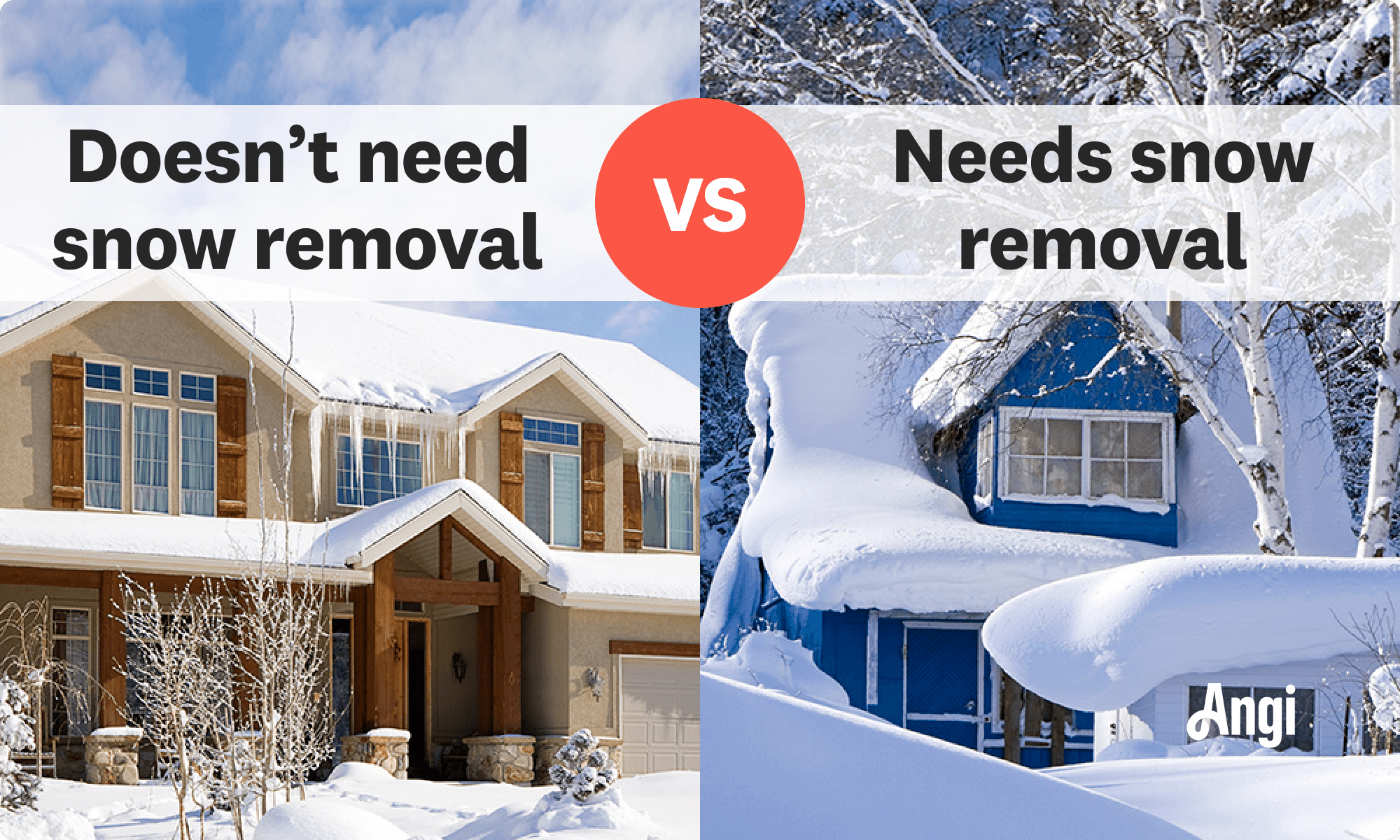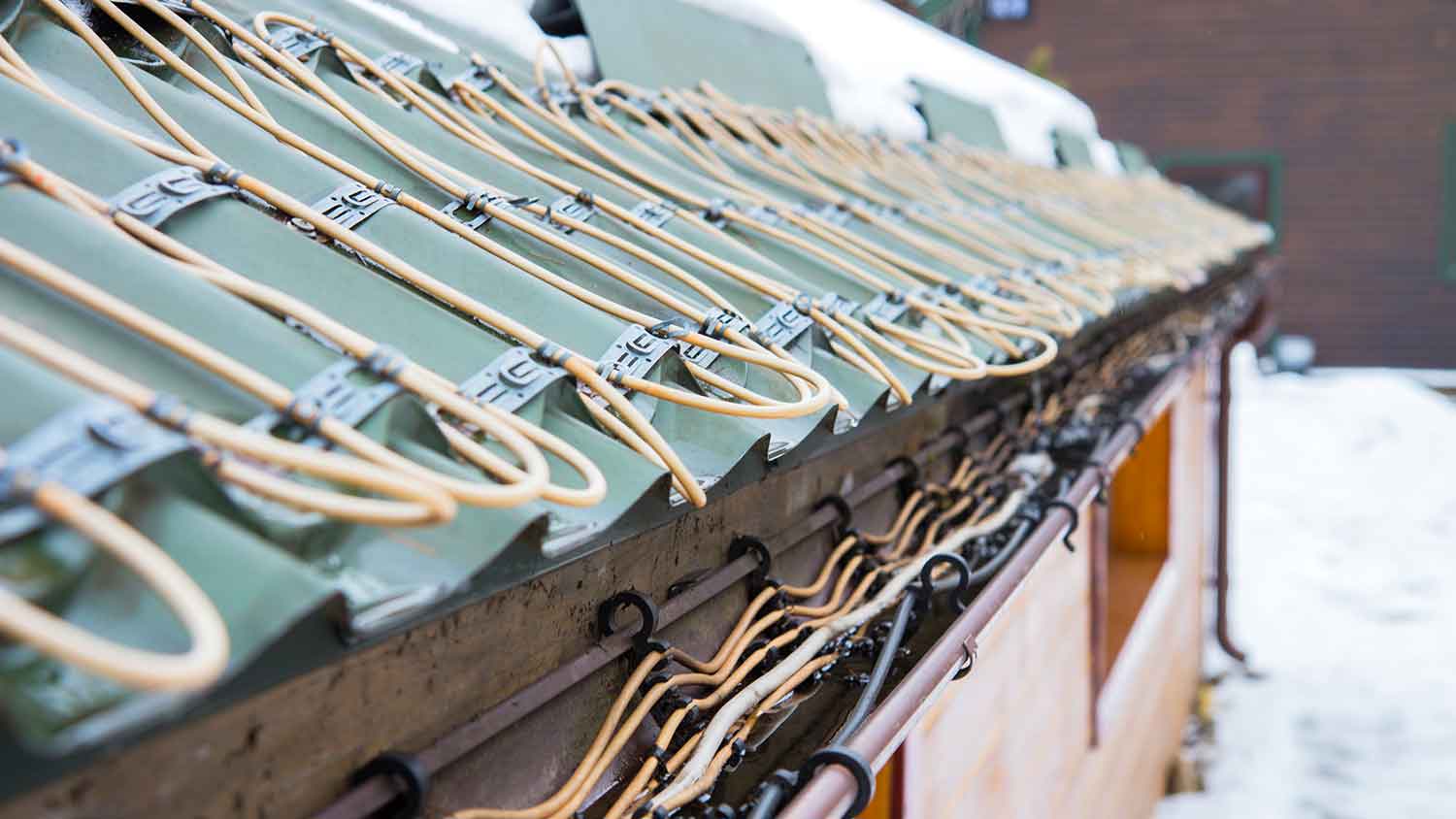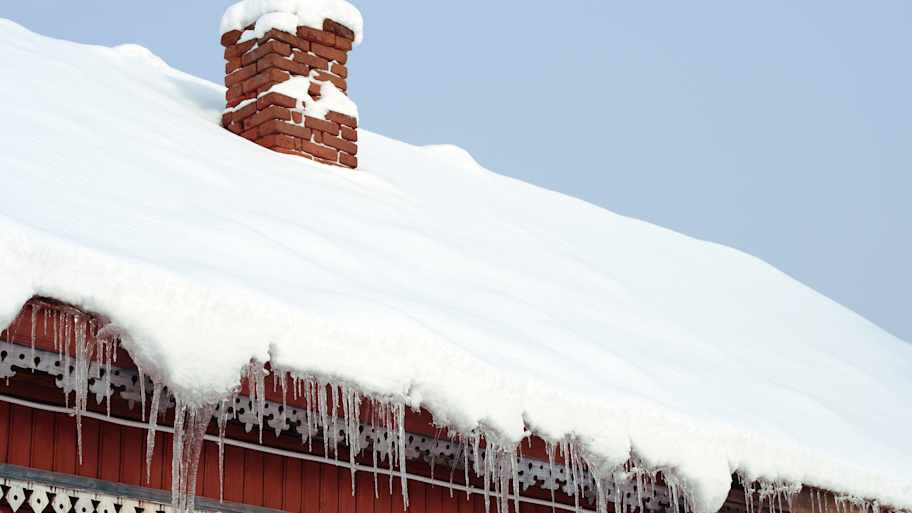
Discover the average cost of roof snow removal, key price factors, and ways to save. Get transparent estimates to protect your home this winter.
A winter wonderland looks great in your yard—but it’s not so wonderful on your roof


Remove snow when you have at least six inches of accumulation.
Snow should be removed in order to prevent damage or roof collapse.
Only DIY roof snow removal if you are using a roof rake.
Always call in a pro to help with roof snow removal jobs that require ladders.
A dusting of snow can be a beautiful sight and make you feel like you are living in a winter wonderland. After a mild snowfall, snow and ice will often melt and clear themselves, requiring no additional work from you. However, if you have a heavier snowfall and are concerned about your roof, then you may want to take some steps to remove the snow.

Before you break out your snow boots and ladder, keep in mind that snow and ice removal is a potentially dangerous task that is best left to a pro. From slipping to major falls, would it not be better to stay safely on the ground, sipping hot cocoa, while an expert handles snow removal for you?
There are several occasions when removing snow from your roof is recommended:
Remove snow from your roof if you have a foot or more of snow because ice dams could form at this depth. However, if you have less than a foot of snow and more is expected, it's best to go ahead and remove it to avoid accumulating more than a foot. If you notice ice dams on your roof after a snowfall, it is best to remove them to protect your roof and home.
If you experience a significant snowstorm of two or more feet of snow, your roof may not be able to hold it. Wet snow and ice are heavy and put pressure on the roof. If there is too much pressure, it can cause damage to the roof or, in extreme cases, collapse.
Remove snow from flat roofs, such as on porches and sunrooms. They are more prone to damage and collapse, since they do not clear as quickly as a pitched roof.
Wondering how much snow your roof can support? Figuring this out will help you schedule snow removal on time. Assuming that your roof is in good condition and not past its typical lifespan, it can withstand 20 pounds per cubic foot of snow. Different snow types weigh differently, so this equates to two feet of packed snow, two to three feet of old and new snow, or just one inch of ice.
Climbing on a roof is dangerous and snowy or icy conditions increase the risk of falling. You should only clear snow from your roof using a roof rake while staying safely on the ground.
However, roof rakes have limited reach, clearing only a few feet from the roof's edge. For heavy snow accumulation or hard-to-reach areas, hire a local snow removal professional or professional roofer near you who can do the job safely and completely. A nearby roof cleaning service can also help clear snow from your roof.
While DIY roof raking can prevent ice dams, it can also cause them to form higher up. In this case, contact an ice dam removal service.
Icicles hanging from the roof, porch, or doorway can be a safety hazard, as they are very sharp and may injure people if they fall off and hit someone. For this reason, remove any icicles where people will walk by gently knocking them down with a broom, shovel, or roof rake. Do not stand on a ladder to remove them.
Snow Blower Safety Snow blowers are useful, but according to the U.S. Product Consumer Safety Commission, more than 4,000 people visit the emergency room every year due to snow blower injuries. Here's how you can achieve snow blower safety.
Ice dams form when snow melts on your roof due to rising heat, then refreezes at the eaves, blocking proper drainage and causing water to back up under the shingles. This can lead to costly roof damage, leaks, and potential mold growth inside your home.
Here are some tips to help prevent ice dams and minimize snow buildup:
Use a roof rake: Clear snow from the edges of your roof using a roof rake, allowing you to remove snow from the ground safely. Stand on a stable surface to avoid slipping.
Install heat cables: Winterizing your roof by installing de-icing cables along your roof’s eaves and gutters can help prevent ice dams by heating critical areas and allowing melted snow to drain properly. These systems should be professionally installed before winter and connected to an outdoor GFCI outlet. The average roof heating cable installation cost ranges between $500 and $2,000.
Install roof guards: Roof guards prevent large amounts of snow from sliding off at once, protecting gutters, landscaping, and people below. The cost to install snow guards ranges between $10 and $40 per linear foot.
Improve attic insulation and ventilation: Proper insulation and ventilation help maintain a consistent roof temperature, reducing the likelihood of snow melting and refreezing.
Consider solar panels: Solar panels can also help generate heat that gradually melts snow and ice. Consult a roofing or solar contractor to explore this option.
Schedule professional roof inspections: Regular inspections can help identify potential issues, such as inadequate insulation or ventilation, that could contribute to ice dams.
Here are the situations in which you should hire a professional for roof snow removal:
If you need a ladder to take care of the snow removal
When you are getting close to 20 pounds per square foot of snow accumulation
When roof raking is not enough to keep snow accumulation below 20 pounds per square foot
If you notice an ice dam forming (icicle formation can indicate ice dams)
If you see signs of a roof leak inside your home
If you notice signs of an overloaded roof (like doors not closing properly)
Now that you know when to remove snow from your roof, you can keep an educated eye on the situation. Snow removal should be left to professionals if you cannot remove it yourself with a roof rake. The average roof snow removal costs between $200 and $700 depending on your roof's size and design. Ice dam removal costs more than snow removal, averaging between $650 and $2,000.
From average costs to expert advice, get all the answers you need to get your job done.

Discover the average cost of roof snow removal, key price factors, and ways to save. Get transparent estimates to protect your home this winter.

Discover the average roof heating cable installation cost, key price factors, and how to budget for your project. Learn how to save and what to expect.

Ice dams can cause roof and water damage and even structural damage to your home. Learn what causes them and how to prevent them to avoid property damage.

Ice dams can cause serious roof damage. Learn why a metal roof can help you avoid ice dams and the problems they cause.

In areas that see heavy snowfall, understanding how to install snow guards on a metal roof is important for protecting people, property, and the roof itself.

It’s snowing up a storm outside when you start to wonder: How much snow can my roof hold? Use our snow load calculator to determine your roof’s limits.